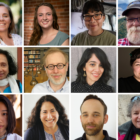
In February 2009, our freshly launched website featured just a handful of stories. So, we were surprised when a reporter from the Wall Street Journal called wanting to know whether the San Francisco Public Press, which was planning to officially launch in March, was going to “replace” the San Francisco Chronicle.
Facing falling revenues (it said it lost $50 million the previous year) and a protracted labor dispute, Hearst Corp. said that unless it was able to make steep staff reductions within weeks, it would sell the paper or, if no buyer emerged, close it. The threat earned national headlines, and though the Chronicle remained open for business, it lost many good reporters and editors.
While the question from the Journal reporter was absurd, the crisis that brought it to that point was real. Ten years ago, the bottom was falling out of the daily newspaper business model. Media pundits were warning that local, ad-supported journalism was an endangered species. So a group of us started the Public Press as a nonprofit, with the quixotic idea of keeping independent, professional muckraking alive through a community-support model.
One of our first big projects was an investigative reporting collaboration with the local independent publisher McSweeney’s called the San Francisco Panorama. We collaborated on producing a 10,000-word exposé detailing how the cost overruns on the new eastern span of the Bay Bridge grew over more than two decades of planning.
By 2010, we started publishing our own ad-free, quarterly newspaper. In early issues, we exposed backroom deals between developers at Treasure Island and allies of former Mayor Willie Brown, profiled real estate speculators sitting on entire neglected blocks of Market Street, and mapped a broken city transit network with data showing how poor neighborhoods got the slowest bus service.
We specialized in stories about under-covered issues and the interests of under-served audiences. We requested public records, sought out whistleblowers and used datasets to tell provocative stories.
Twenty-seven roughly-quarterly print editions and more than 3,000 articles later, we have refined our methodology and won more than a dozen journalism awards on other topics, including the resegregation of the city’s public schools, the persistence of thousands of unoccupied residential hotel rooms while neighbors languish in homelessness, the stalled efforts to enforce earthquake retrofitting in residential buildings, and widespread Bay Area waterfront development that seemed to fly in the face of new climate change warnings, with scientists saying sea levels could rise as much as 10 feet within a human lifetime.
For 2019, we plan to expand into audio, build a new website, host civic education events and delve into stories about environmental justice, affordable housing, digital privacy, education financing and more.
We are in an aggressive growth phase, thanks in part to support from about a dozen foundations. But our community of more than 550 individual supporters now cover about a third of our costs.
As we start our 10th anniversary year, we’re asking for your help to keep independent, influential and accountable local journalism growing. Consider giving online or by sending a check to 44 Page St., Suite 504, San Francisco, CA 94102.
We are grateful to all of our supporters. The Public Press wouldn’t be here without you.
Michael Stoll, Executive Director
Lila LaHood, Publisher
A version of this post was first published in Issue No. 27 — the spring 2019 print edition — of the San Francisco Public Press.










